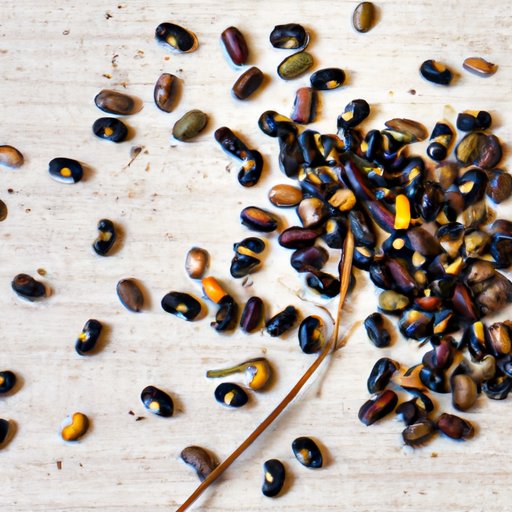Introduction
Seeds are the building blocks of plant life. Without them, the plant kingdom would not exist as we know it today. Seeds play a critical role in agriculture, ecology, and our planet’s ecosystem.
In this article, we will explore the basics of what a seed is, the science behind their role in agriculture, the lifecycle of a seed, different types of plant seeds, and the resilience of seeds.
The Basics of Seeds: Understanding the Foundation of Plant Life
A seed is a small, embryonic plant enclosed in a protective covering. It is the reproductive structure of plants and is essential for the continuation of plant species.
Seeds are formed as a result of sexual reproduction in plants. They contain offspring with genetic material from both the male and female parent plant.
The parts of a seed include the embryo, endosperm, and seed coat. The embryo is the young plant that will develop from the seed after germination. The endosperm is a source of nutrients for the developing embryo. The seed coat is a protective layer that surrounds the seed and helps to prevent damage or desiccation.
Unlocking the Science Behind Seeds and Their Role in Agriculture
Seed technology and production have come a long way in recent years. Modern agriculture relies heavily on seeds to produce crops in large quantities to feed the world’s population.
Seed quality and preservation are crucial as they determine the yield, germination, and vigor of the plant. It is essential to ensure that seeds are free from pests, disease, and genetic abnormalities.
From Tiny Acorns to Mighty Oaks: Exploring the Lifecycle of Seeds
The lifecycle of a seed begins with germination, where the seed absorbs water and initiates growth. The seedling then grows into a mature plant and produces flowers or fruit, which contains seeds.
The factors that influence seed growth and development include temperature, light, water, and soil nutrients. The optimal conditions for seed growth vary depending on the type of plant seed.
Seed Diversity: A Comprehensive Guide to the Many Types of Plant Seeds
There are different types of plant seeds, including monocot and dicot, angiosperm, and gymnosperm.
Examples of popular seeds include corn, wheat, beans, and rice. Each type of seed has unique characteristics that enable it to thrive in a particular environment.
Seed diversity is crucial to maintaining the health of our planet’s ecosystem. Different types of seeds provide food for animals and insects and support biodiversity.
The Amazing Resilience of Seeds: How These Tiny Powerhouses Survive and Thrive
Seeds are incredibly resilient and have evolved various strategies for survival in different environments. For example, some seeds have developed dormancy to survive in harsh conditions until moisture and warmth become available.
The hard outer layer of some seeds allows them to withstand extreme temperatures, UV radiation, and even survive in space. Seed resilience is essential for the survival and evolution of plant species.
Conclusion
Seeds are fundamental to the plant kingdom, agriculture, and our planet’s ecosystem. Understanding and valuing seeds play a crucial role in supporting our planet’s health and survival.
Supporting seed research and conservation is vital in ensuring healthy ecosystems and food security for future generations.
